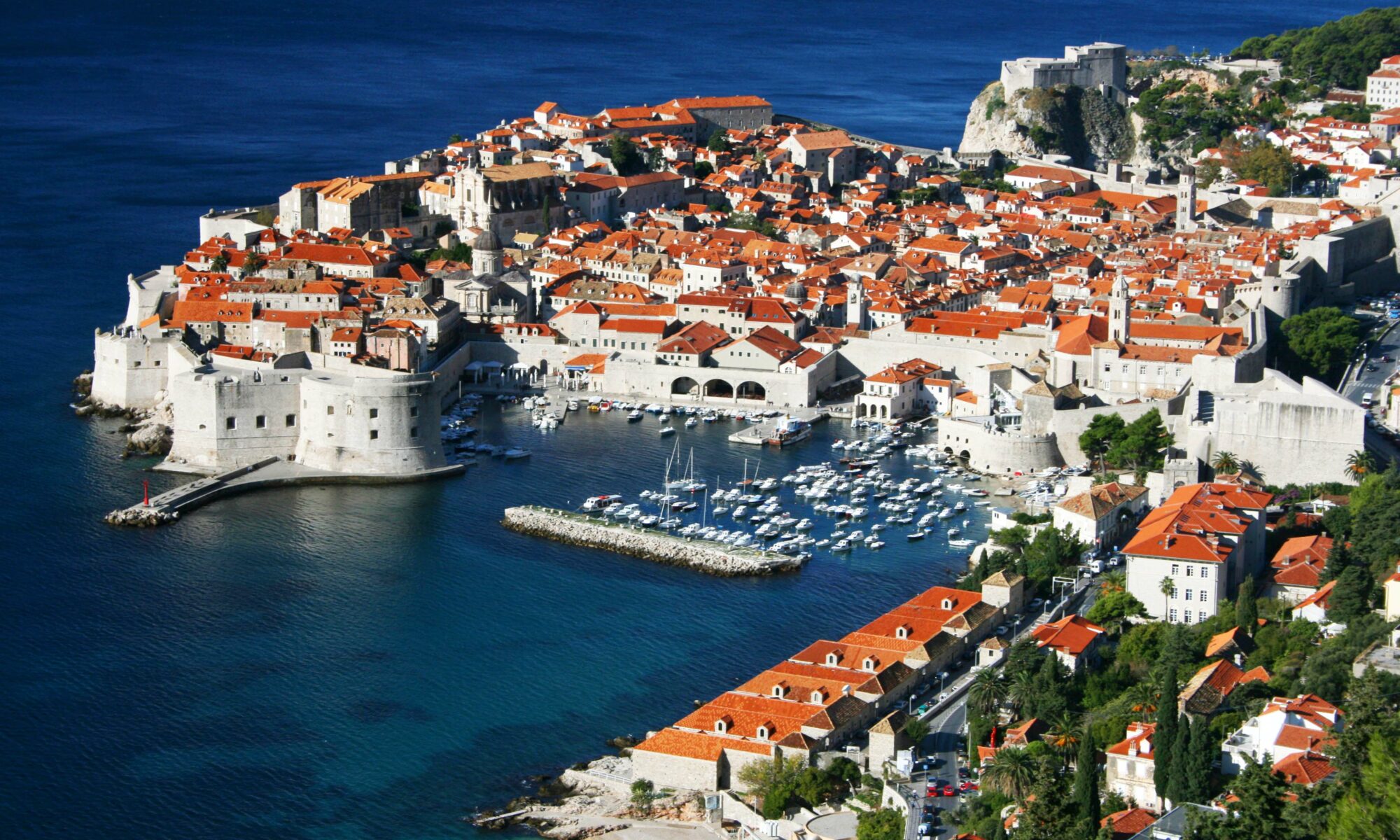Bathed by the reflections of the shimmering Adriatic, and with an old town surrounded by walls that have withstood centuries of turmoil, the Croatian city of Dubrovnik remains one of Europe’s most enduring treasures.
Just as an oyster shell protects the life within, Dubrovnik’s walls nurtured a flourishing maritime republic that once rivaled Venice.
For centuries this city of stone and light has dazzled visitors, none more so than the romantic poet Lord Byron, who named the city, The Pearl of The Adriatic.
Pile Gate
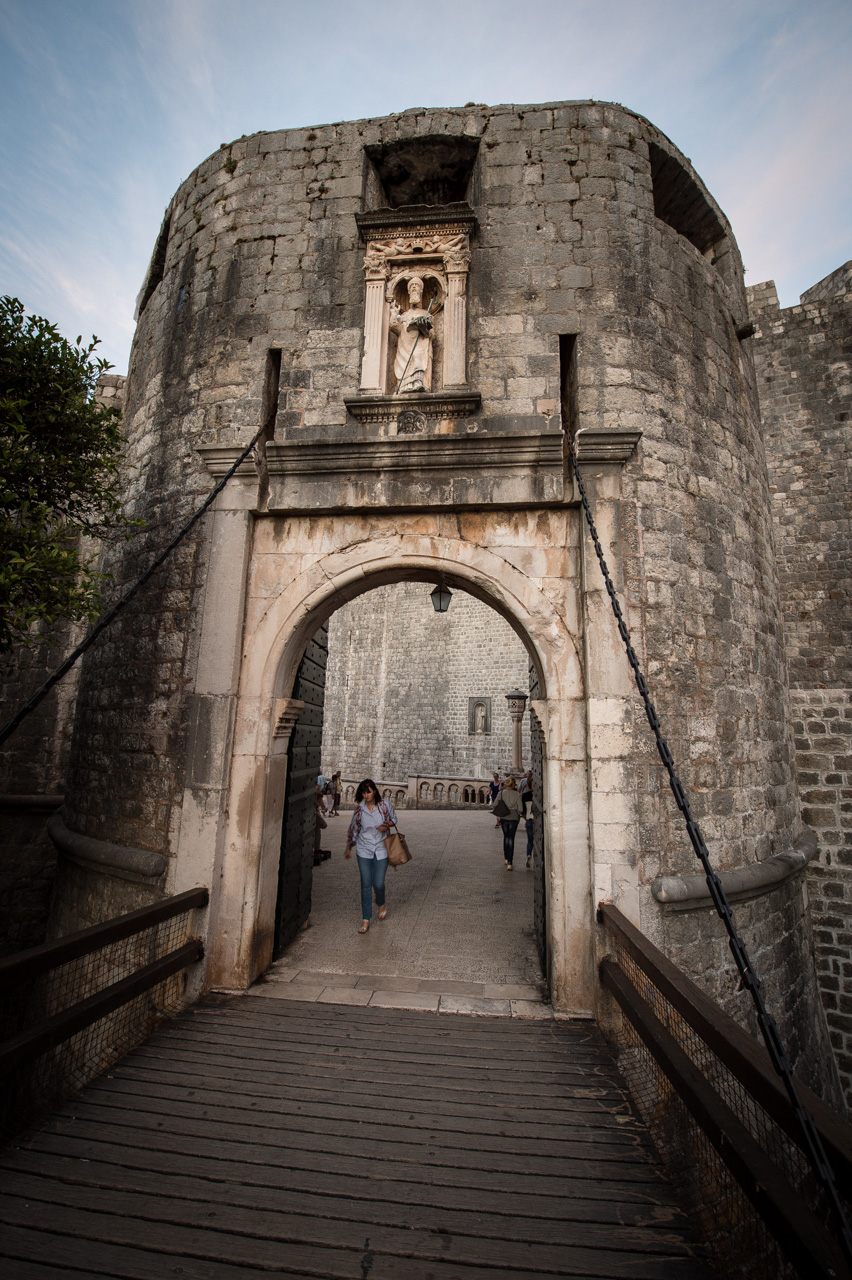
Cross the medieval bridge and enter the city through the grandest of its entrances, Pile Gate.
Dubrovnik’s walls
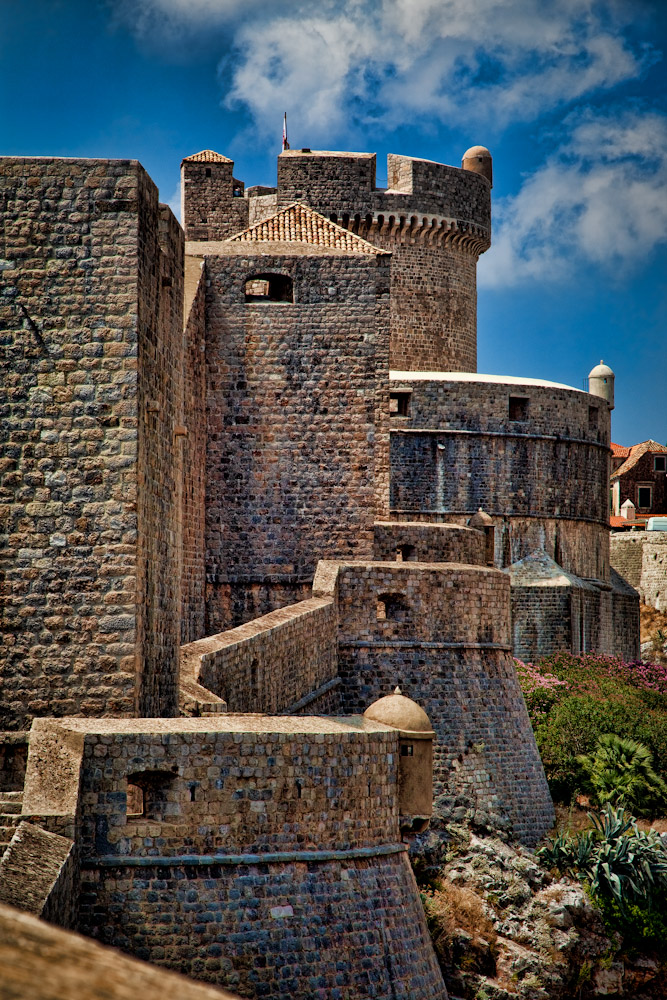
Once inside, climb the ramparts for a history lesson like no other. Dubrovnik’s walls first rose in the 7th century, but most of what stands today was built in the 14th and 15th centuries to repel the Ottoman attack.
These are walls, which have been shaken by armies and earthquakes. These are walls whose every stone tells the story of resilience and liberty.
The Old City’s ramparts

It takes an hour or two to walk the Old City’s ramparts, depending on how often you are stopped in your tracks by the views.
Fort Bokar
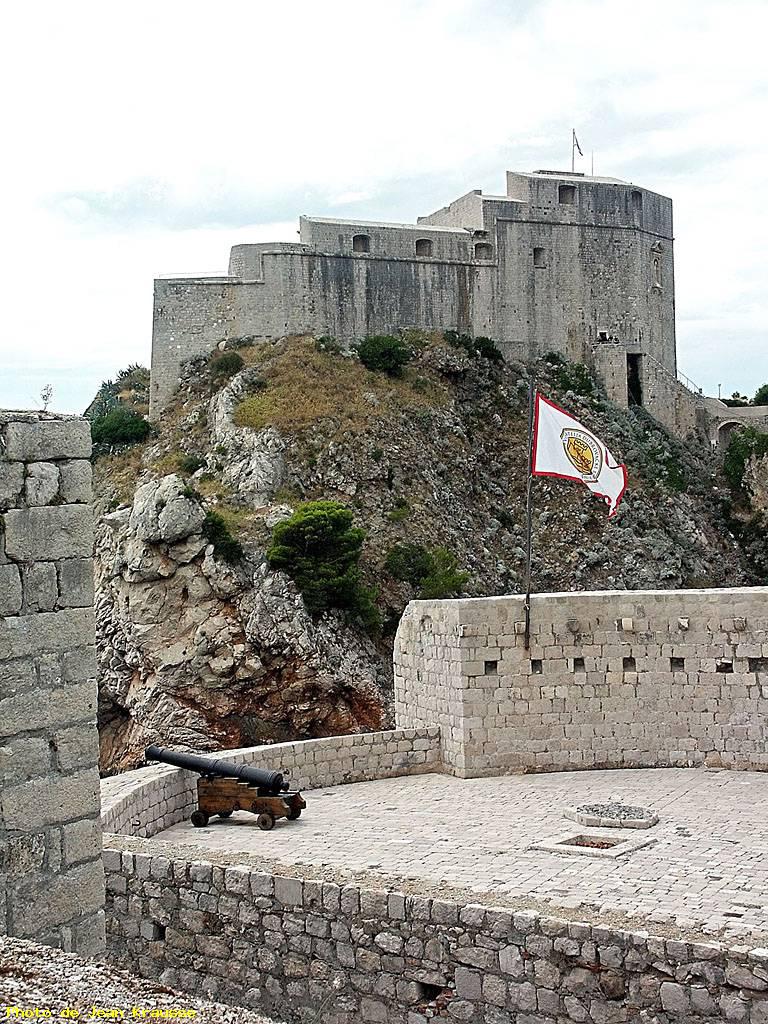
Dubrovnik’s citizens have always valued harmony, and that sense of order and unity continues today as visitors circle the Old Town in an anti-clockwise direction. Stop for a while at Fort Bokar, and take in the views to Fort Lawrence.
Fort Lawrence
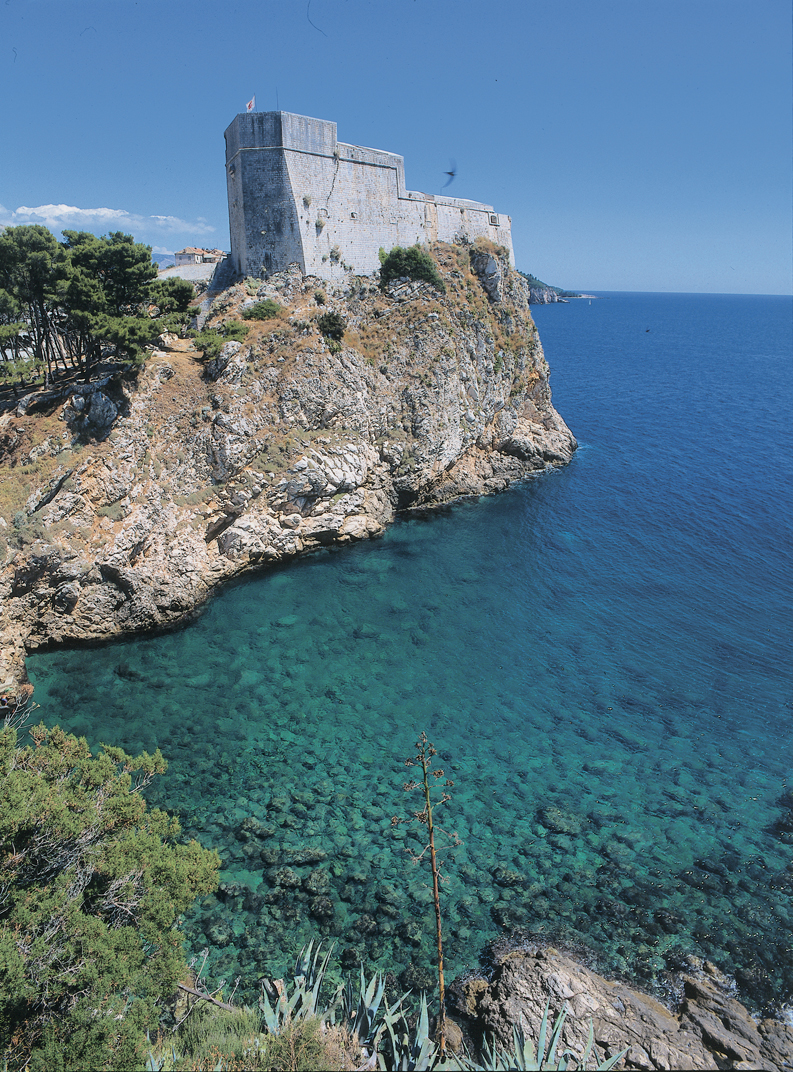
In the 11th century, locals heard whispers of a cunning Venetian plan to build a base on these rocks from which to attack the city. Dubrovnik’s citizens mobilized and within months the first walls of Fort Lawrence were in place.
When the Venetian warships finally arrived laden with men and materials, they were forced to simply turn around and sail for home.
St John’s Fort
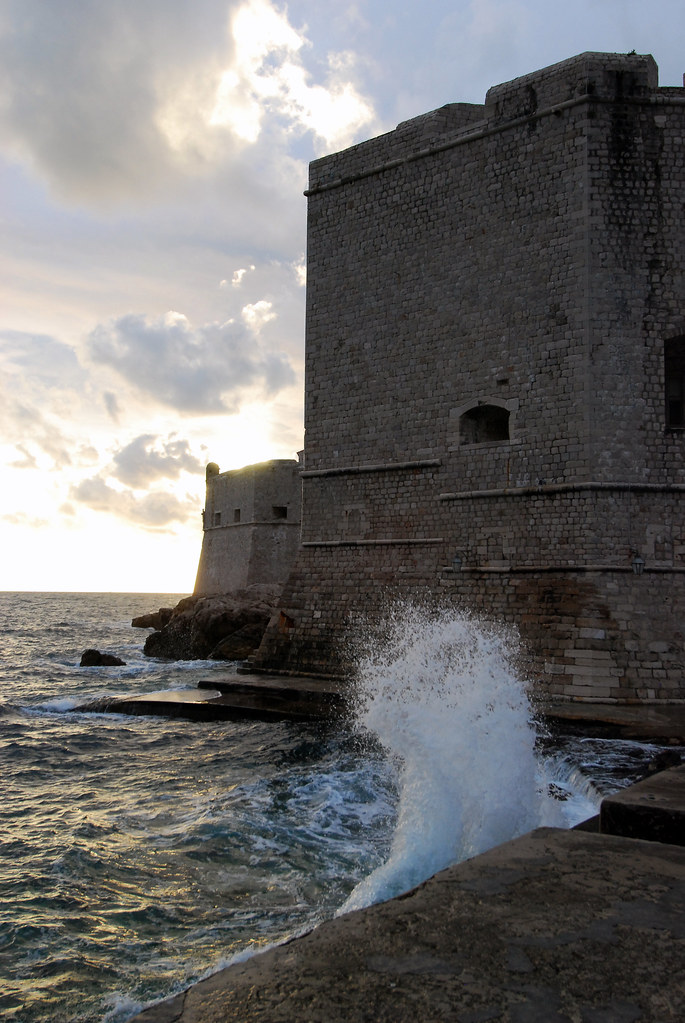
Follow the sea wall to St John’s Fort, which protected the City Harbor from enemy ships and pirates.
Once home to a glorious fleet of over 200 trading vessels, for centuries Dubrovnik was one of the world’s great seafaring cities.
The shipyard arches
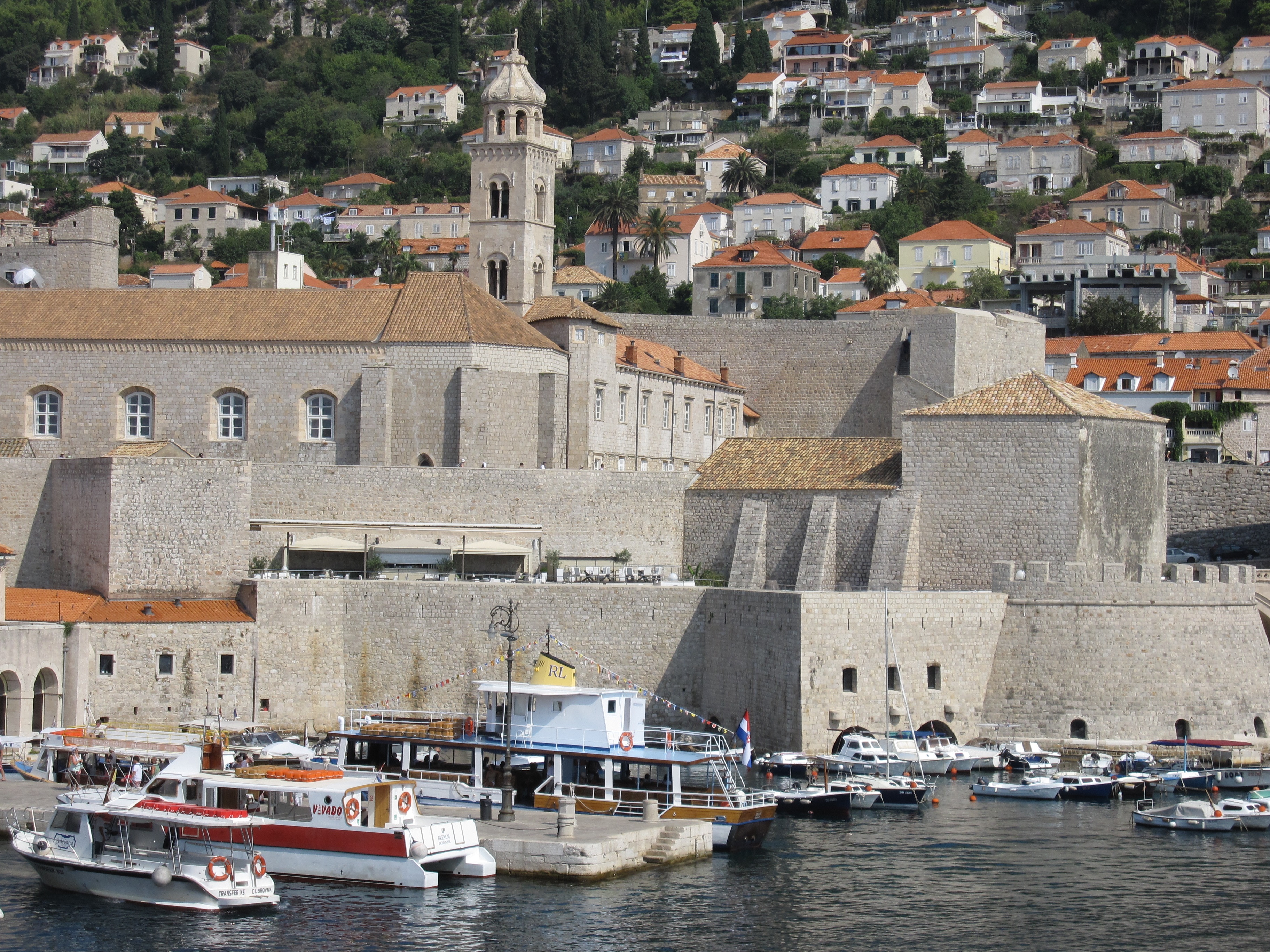
Come down from the walls for a while, and wander past the shipyard arches, where the republic’s legendary galleys could be built away from the eyes of foreign spies.
Fort Revelin
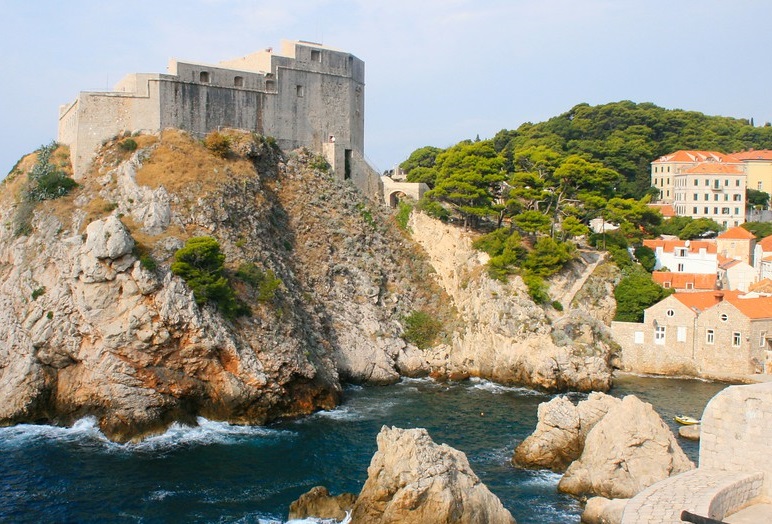
Climb the ramparts once again, and continue on to Fort Revelin, which offers even more commanding views of the harbor.
In 1667, a great earthquake devastated most of the city. Such is the strength of Revelin, that when the quake’s dust finally settled, the fortress emerged unscathed.
Fort Minceta
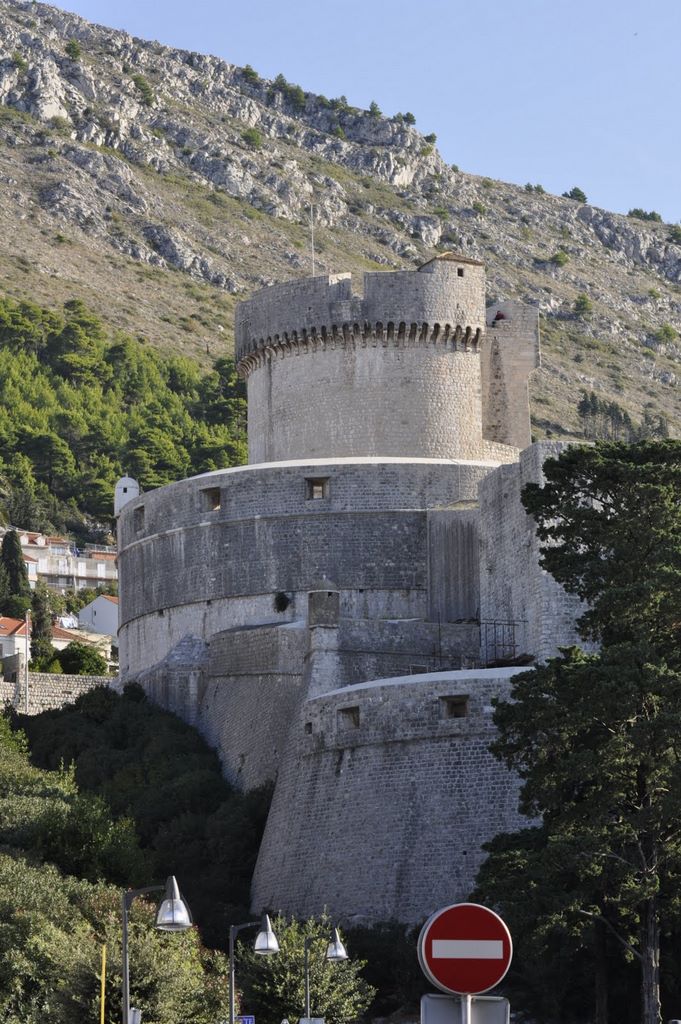
From Revelin, follow the northern wall to the highest point in the city’s defenses, Fort Minceta.
During the fort’s construction, rocks were in such short supply that every visitor to the city was required to bring a stone. This toll created one of the city’s most enduring symbols.
From the fort’s tower, the entire city stretches away like a vision.
The Stradun
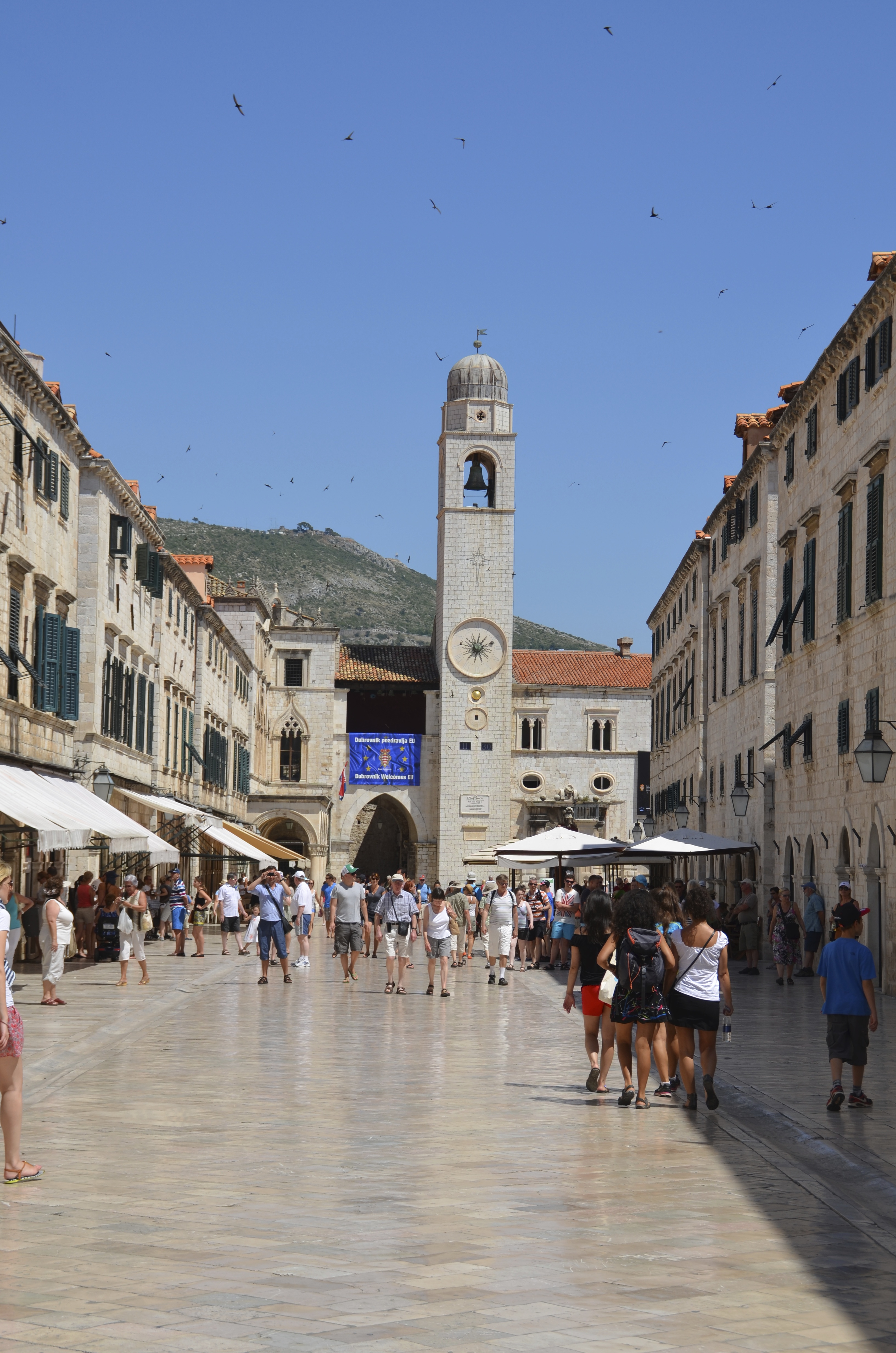
Once you’ve arrived back at Pile Gate, it’s time to descend into the streets of the Old Town. The town is divided in two by the Stradun, a street paved with limestone and polished by centuries of footsteps.
Linking two of the city’s gateways, the Stradun is marked at each end by a bell tower and a fountain.
Onofrio’s Fountain
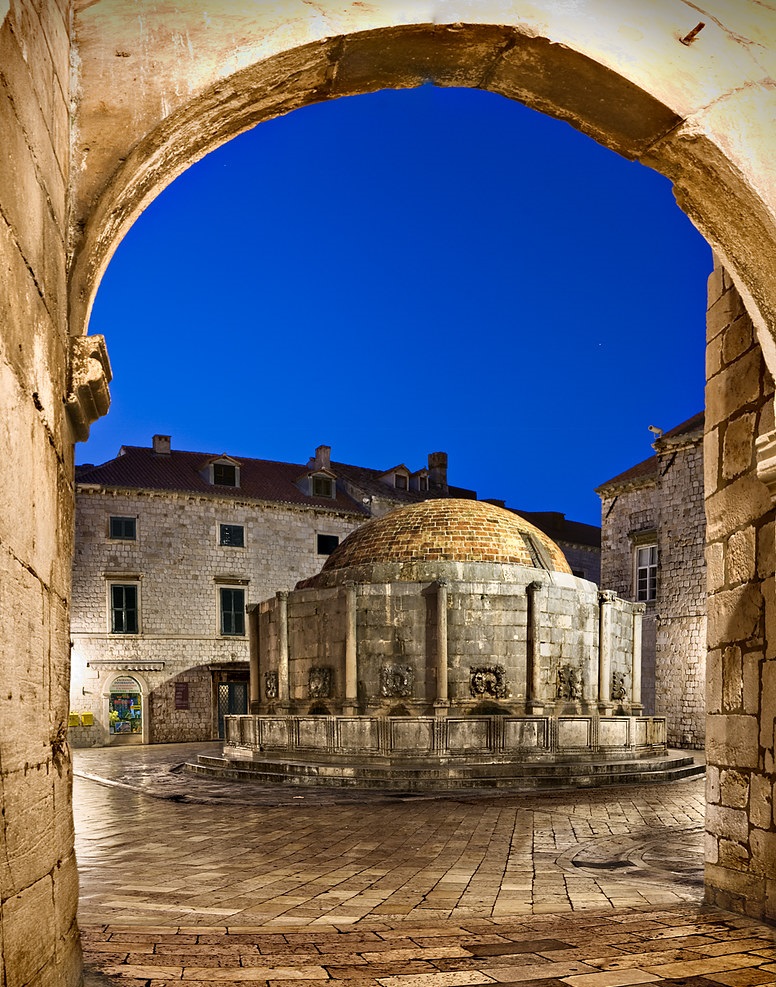
Refresh yourself at Onofrio’s Fountain, and enjoy spring water as pure as when it was first piped here by an aqueduct 500 years ago.
St. Saviour Church

Facing the fountain in St. Saviour Church, one of the few Renaissance-era buildings to survive the earthquake of 1667.
The Franciscan Monastery
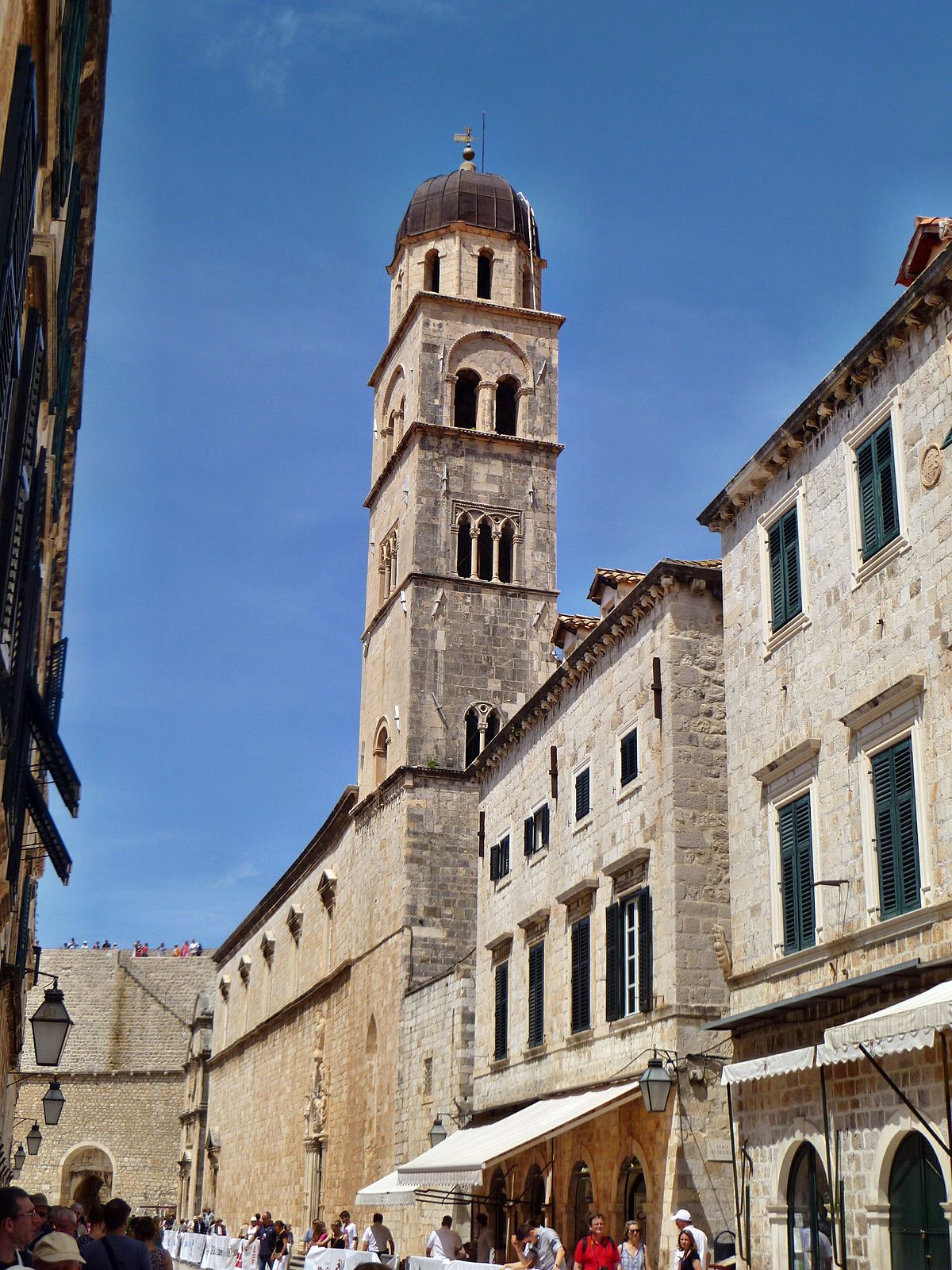
Next door, step into the cool confines of the Franciscan Monastery. Explore the historical exhibits, and order an elixir from one of the world’s oldest functioning pharmacies.
Not just a spiritual sanctuary, the monastery was built next to Pile Gate so that the resident monks could rush to its defense in times of attack.
Luza Square
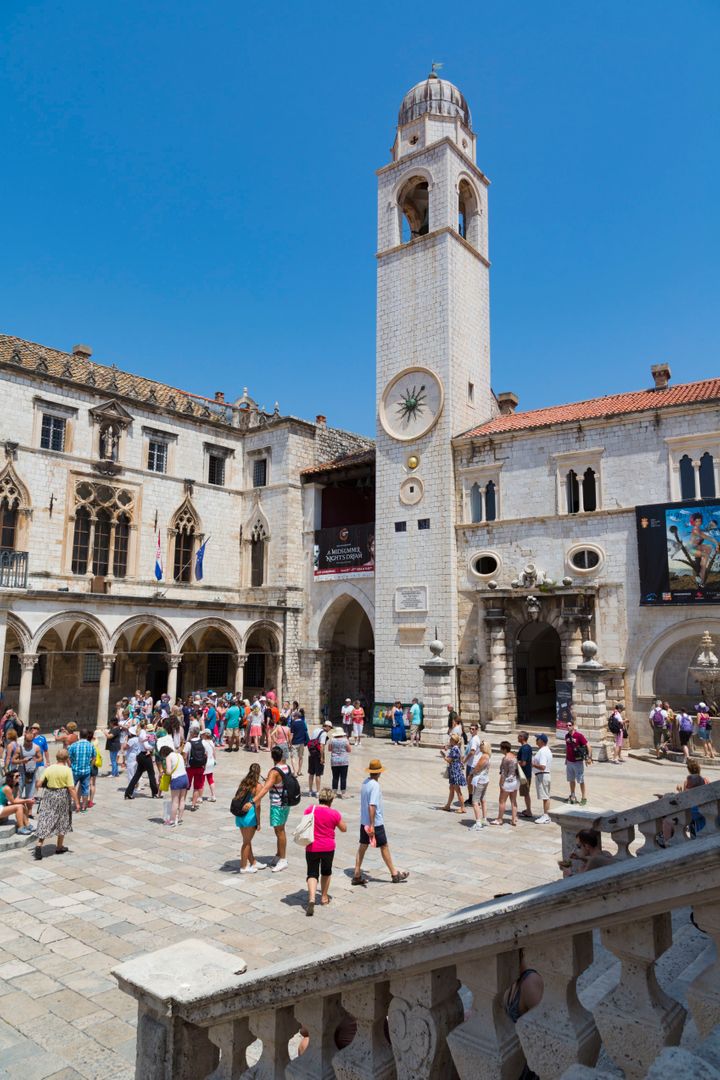
At the Stradun’s eastern end, the city’s clock tower looks over the old market place, Luza Square.
Sponza Palace and Saint Blaise Church

Here you’ll find some of Dubrovnik’s finest architectural treasures such as Sponza Palace, …and Saint Blaise Church, which honors the city’s patron saint and protector.
The chapel of the Franciscan Monastery

After refilling your water bottle under the clock tower, head northwards to explore even more of the city’s sacred places.
Behind the imposing walls of the Dominican Monastery, relax in the quiet interiors of the chapel and admire the religious artworks.
The Cloister of the Franciscan Monastery
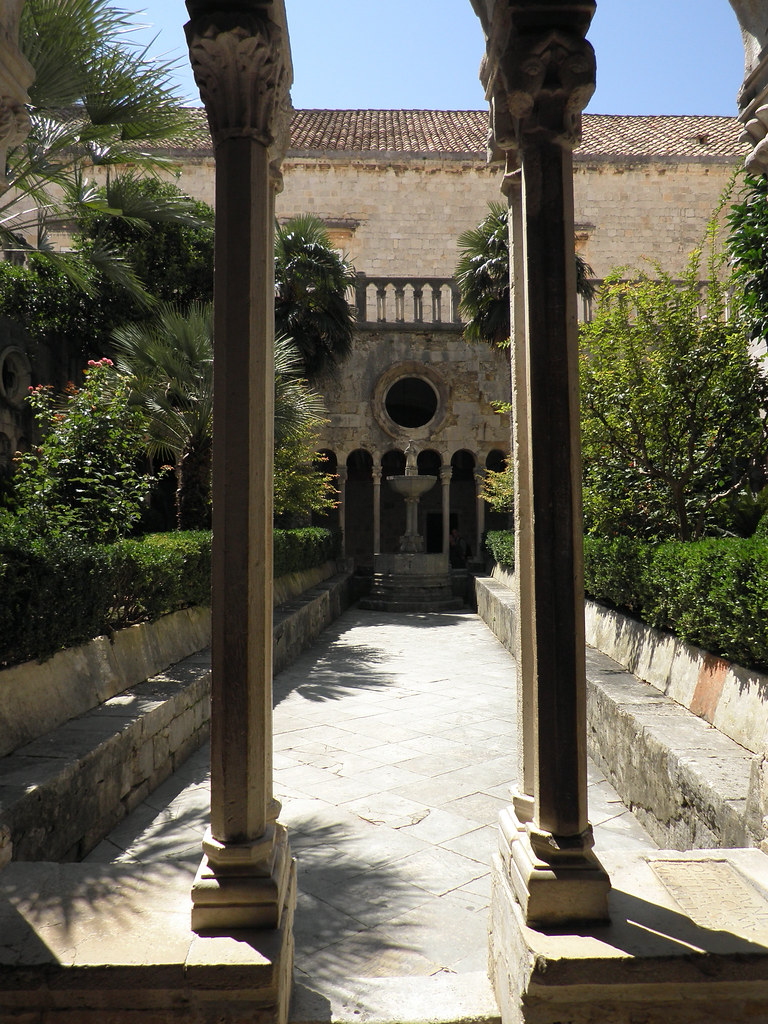
Breathe in the lemon-scented air of the cloisters, whose medieval well supplied the besieged town as Yugoslavian shells rained down during the 1990s Croatian War of Independence.
Baroque dome of Dubrovnik Cathedral
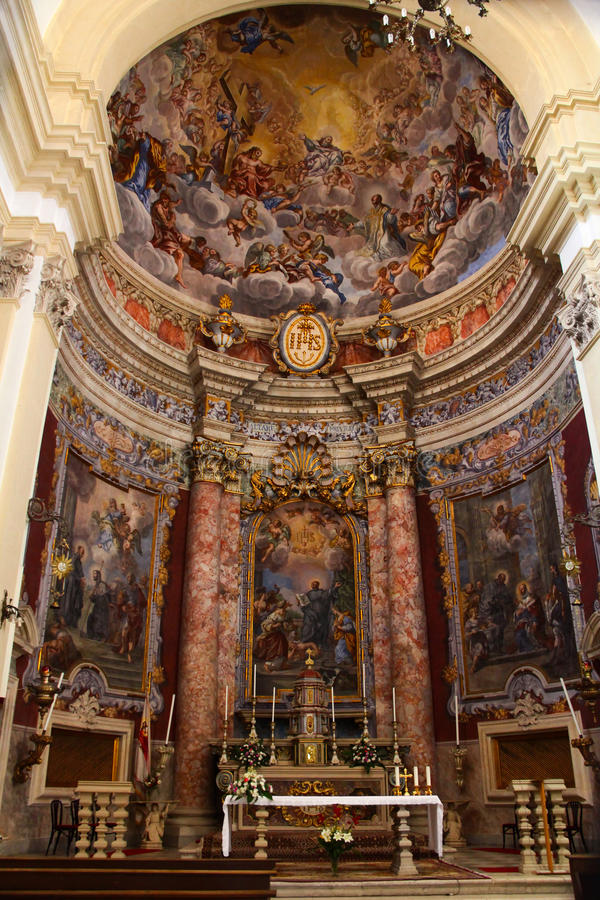
Just to the south of Luza Square, rise the massive Corinthian columns and Baroque dome of Dubrovnik Cathedral.
While returning from the 3rd Crusade, the English King, Richard the Lionheart, was shipwrecked on the nearby island of Lorkum. After being cared for by the people of Dubrovnik, the grateful king gifted the city 100,000 ducats to build a church, and the greatest cathedral in the Adriatic was born.
Banje Beach
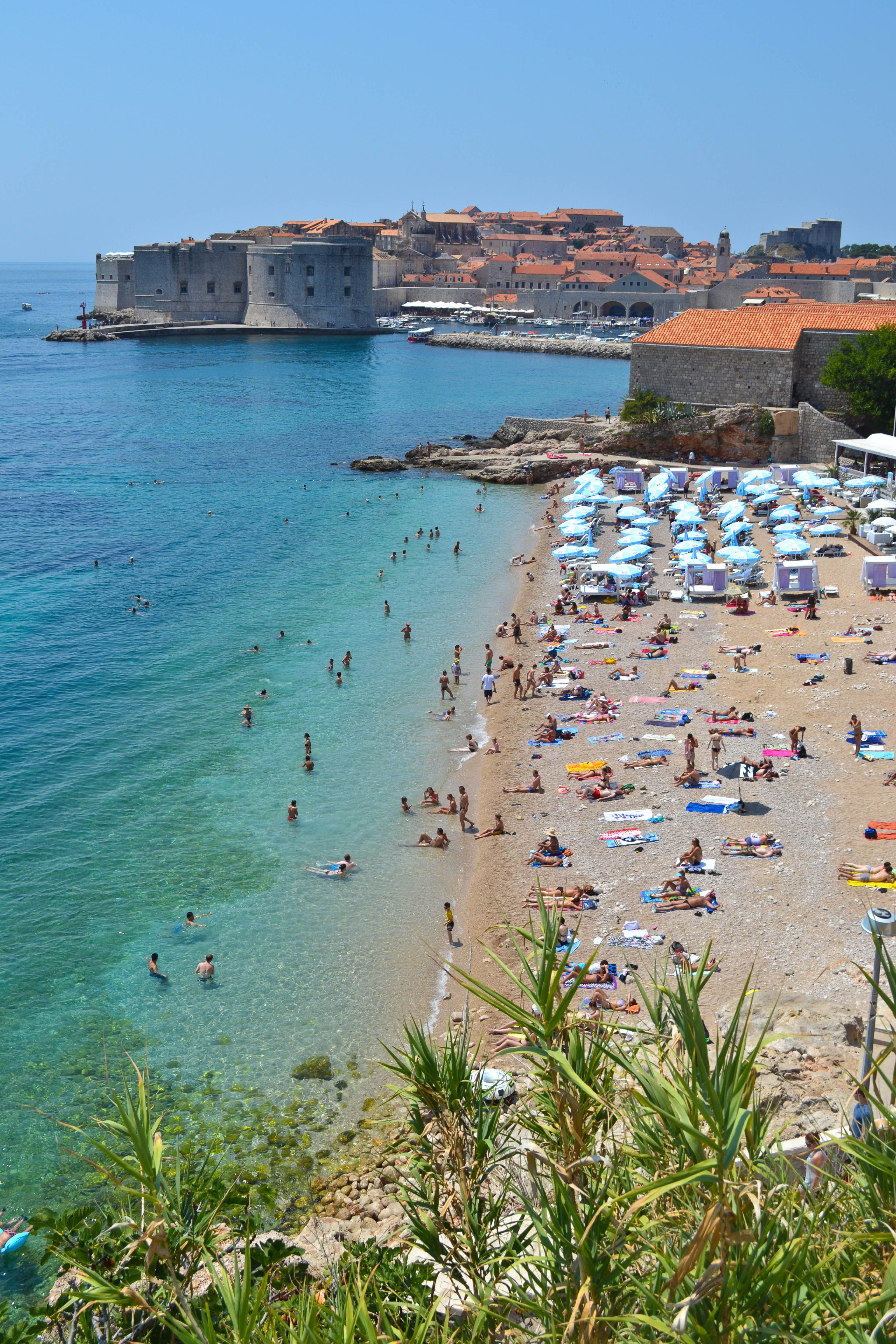
When you’re finished exploring the Old City’s architectural highlights, you’ll discover endless moments of bliss down the cities alleyways and laneways too.
But the city of Dubrovnik isn’t just contained to its Old Town, there’s plenty to explore just beyond its walls.
Give your feet a break from the cobblestones, and sink your toes into the pebbles and sand of Banje Beach. Cool off in the crystal clear waters or just enjoy the sound of lapping waves as they kiss the sun-drenched Dalmatian coast.
Dubrovnik’s modern port in Gruz harbor

To the west of the Old Town, follow the promenade past more beautiful beaches, … peaceful bays,…and old summer homes, …all the way around to Dubrovnik’s modern port in Gruz harbor.
While the gigantic cruise ships have replaced the little trading vessels of old, many of the things which make Dubrovnik so special haven’t changed at all. The spirit of independence,…the sparkling waters, …and of course those walls, …all these things exist in a state of perfect timelessness.
Conclusion
Throughout the ever-swirling, ever-shifting tides of time, The Pearl of The Adriatic has continued to shine.
Today’s Dubrovnik welcomes and enchants all those lucky enough to pass through its gates, just as it has for centuries.
